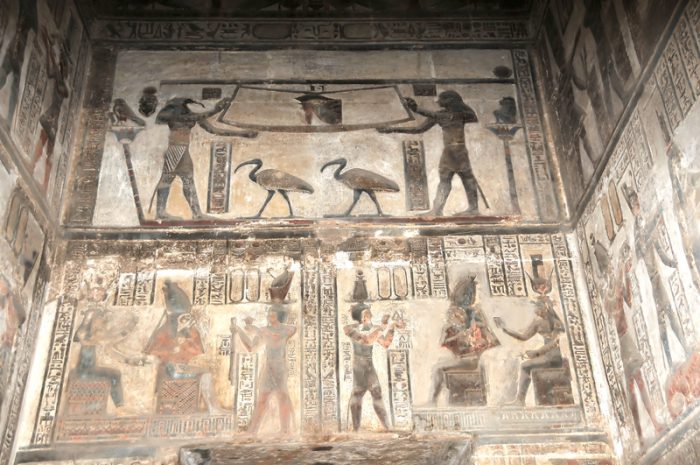This February has been a big month for archeology in Egypt.
A pair of newly-revealed discoveries are jam-packed with artifacts from thousands of years ago. One even had a timely "message from the afterlife" according to a lead archeologist.
Messages? From the d-d-dead? Read on...if you dare!
I'm sorry, but have we met, Hetpet?
Wall paintings in the tomb of Hetpet. (Getty Embed)
The first discovery was revealed to the public earlier in the month. It is a 4,400 year-old tomb of a high-ranking priestess from the Old Kingdom era of Egypt. This era dates back to when the Great Sphinx and Pyramid of Giza were built — in fact, this particular tomb was found near the Great Pyramid.
The name of the priestess was Hetpet (say HEH-tuh-PEHT). She worked in honor of Hathor, the goddess of fertility and childbirth. Her tomb is full of wall paintings that are in stunning condition considering that they were painted 44 centuries ago. Scenes include images of Hetpet fishing, hunting, and receiving offers from children. There are even monkeys, which were kept as pets at the time. (Happy to know that Egyptians liked monkeys, too!)
City life after death
A sarcophagi in the necropolis. (Getty Embed)
The second discovery, revealed only a few days ago, is not as old as Hetpet's tomb. But, it is no less spectacular.
It is a series of tombs known as a necropolis, which means "city of the dead." (Okay, as creepy as that sounds, it is really just another name for a cemetery.) And this city is full of occupants.
The archeologists leading the expedition say that it will take years for them to completely catalogue the necropolis, which contains at least 8 tombs, and dozens of sacrophagi (coffins). But they can confirm a few things for us already.
Private army
Ushabti figures...collect them all! (Getty Embed)
The necropolis dates back around 2,000 years during the New Kingdom of ancient Egypt. Many of Egypt's most famous pharaohs lived during this era, including Amenhotep III, Ramses II, Nefertiti, and Tutankhamen.
Among the artifacts are around a thousand ushabti figures. These tiny sculptures (known as "answerers" because they would answer to their master's commands in the afterlife) were placed in tombs to care for the dead. Also, like the Hetpet discovery, several of the tombs were of priests of the god Thoth. This Egyptian god had a head of an ibis and was responsible for wisdom, science, magic, writing, and judgment of the dead. (Judgment of the dead? So, would it be good or bad luck to be buried next to this guy?)
The archeologists also made a lucky discovery. According to the BBC, lead archeologist Mostafa Waziri was digging in one tomb this past New Year's Eve, when he came across a necklace charm. Inscribed on it in hieroglyphics (picture language) was a message: "Happy New Year." (What? Whoa!)
If you're a fan of ancient Egypt, it's safe to say that 2018 is looking like a happy new year, indeed! Learn more in the video below...
 The ibis-headed god Thoth and the goddess Hathor are part of a pair of new discoveries in Egypt. (Neil Harrison | Dreamstime.com)
The ibis-headed god Thoth and the goddess Hathor are part of a pair of new discoveries in Egypt. (Neil Harrison | Dreamstime.com)










wow!!! 😮